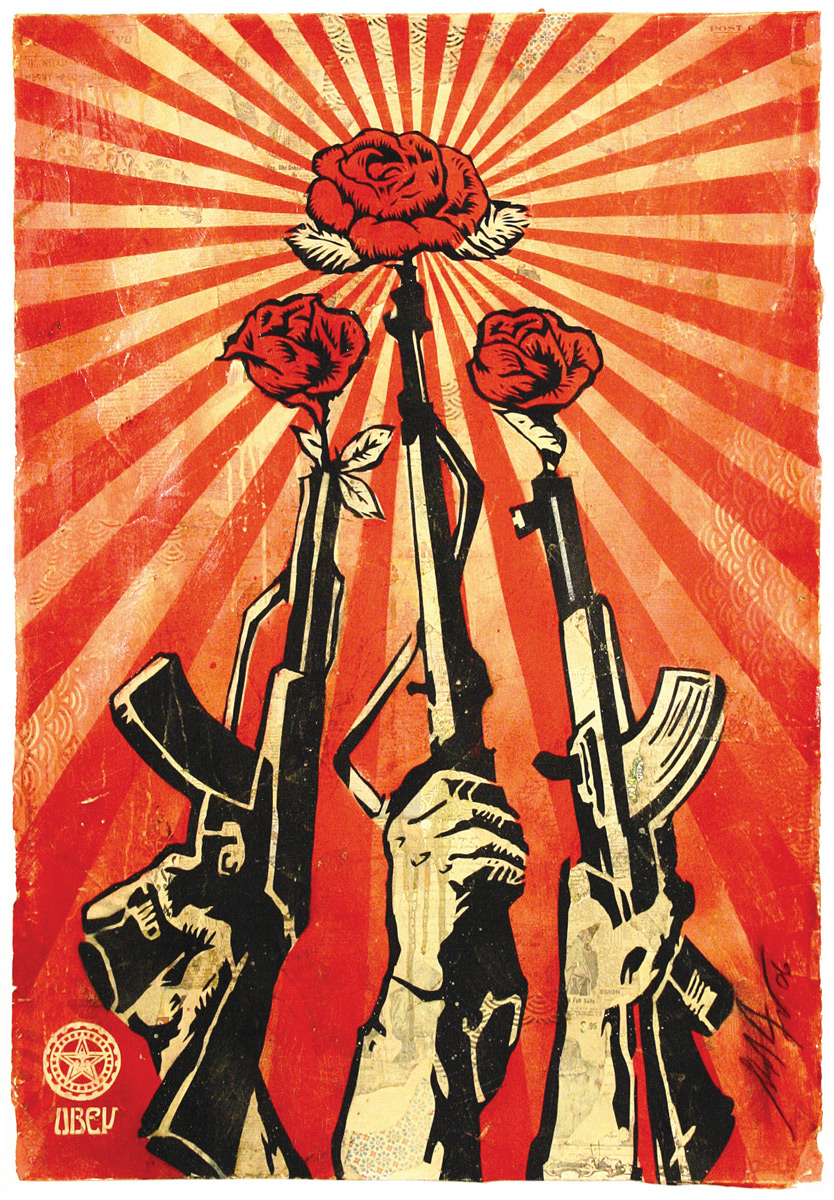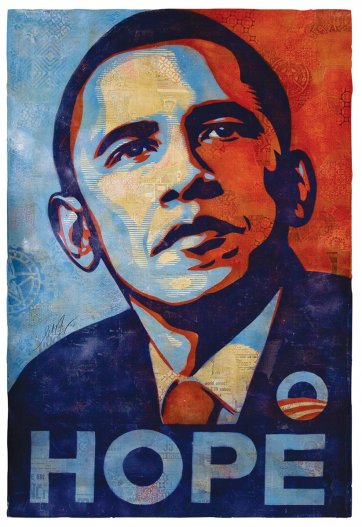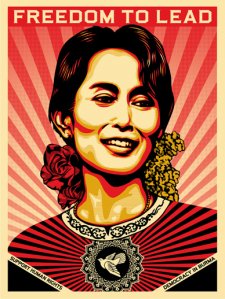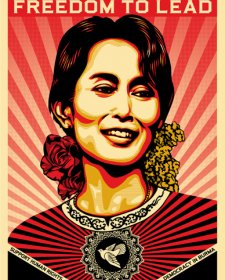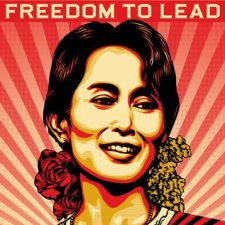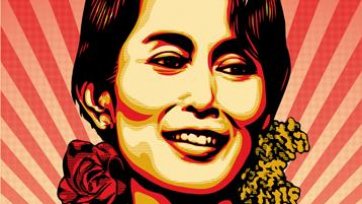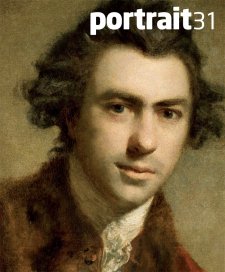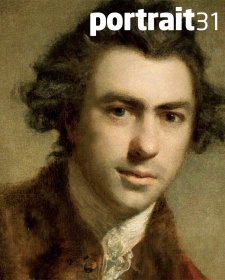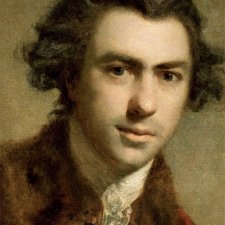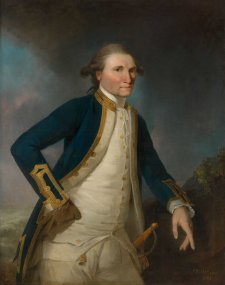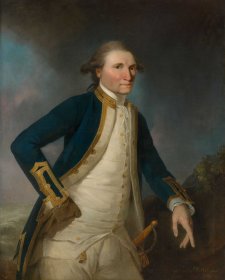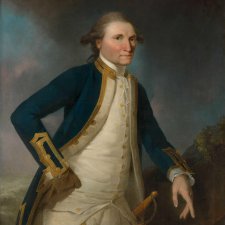It’s not often that an artist is arrested walking into the opening of their first museum retrospective. And considering that this same artist’s portrait of the new president was being acquired by the National Portrait Gallery in Washington at the same time, the whole scenario seemed even more unlikely.
The artist was Shepard Fairey, catapulted to fame during the 2008 presidential election with his resonant image of Barack Obama, but known primarily for his street art, posters and illustrations. Fairey was apprehended by the police for graffiti offences as he entered the Institute of Contemporary Art in Boston where a major exhibition of his work was being held. He had been postering walls of the city with his stickers and posters. Long before his art appeared in galleries, Fairey had populated the streets with his striking designs.
Fairey (born 1970) graduated from the Rhode Island School of Design in 1992 but had already begun to be known by his peers for his sticker campaigns that took his images to the street. Andre the Giant has a posse was launched in 1989 and distributed in its thousands by the skater community across many American cities as photocopies, screen prints, vinyl stickers and stencils. He followed up with his iconic OBEY message that was effectively equivocal but suggestively anti authoritarian. The image is still being circulated today. Fairey has said that he wanted to share his images with an audience and, especially before internet, abandoned buildings, urban spaces and city streets provided high visibility. This visibility has come at a cost: his arrest on 7 February this year for tagging is his 15th such conviction.
After he graduated, Fairey set up his own printing business, which eventually expanded to become the design agency Studio Number One, founded in 2003 with his wife Amanda. Fairey designed posters, t-shirts a suite of successful record covers for bands such as the Black Eyed Peas, Anthrax, Smashing Pumpkins and the poster for the film Walk the Line. Fairey’s commercial work and his private passions aren’t always easy to separate, but generally his posters announce his politics. Wearing his heart on his sleeve, Fairey has made posters of his favourite musicians - Joe Strummer, LL Cool and Tupac Shakur – and his strongly held causes – the environment and the war in Iraq.
Fairey’s posters combine contemporary appeal with a strong retro note, showing a debt to Andy Warhol, to the design of socialist posters created during the 1920s and to South American posters of the fifties. Assimilating these influences, Fairey has produced a body of work characterised by strong graphics and simple but powerful colour combinations intended to compete against the busy distractions of the urban streetscape. While many of his posters carry a strong political message, Fairey has generated numerous portraits. His portrait heads tweak the celebrity cult that Warhol mined but there are fewer movie stars and more musicians, artists and sportsmen.
These images of working class heroes and the democratic mode of distribution record a generational shift evident in the series of anti Bush images that were directed against the policies of George Bush and his government. Fairey notes that his posters had usually been directed against something rather than endorsing it until Barack Obama announced his presidential candidacy. On his own initiative, Fairey launched a poster campaign in support of Obama. The striking black red and pale blue image of Obama ‘took off in a viral way that the internet allows these things to take off’ and images began to appear on t-shirts, on stickers and on walls all over the United States, quickly becoming the iconic image in the presidential contest. It was inevitable that Obama’s campaign managers approached Fairey to secure official endorsement to use the image, its aspirational message and its street cred. Americans of every political stripe responded and the rest is history.
